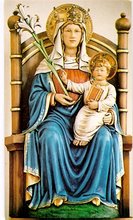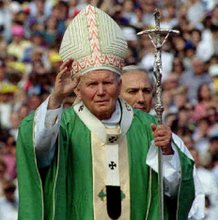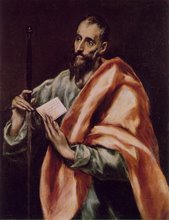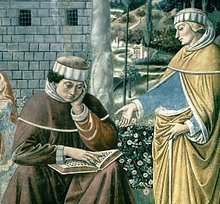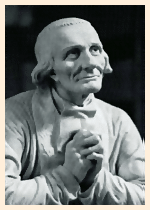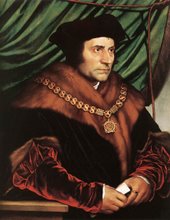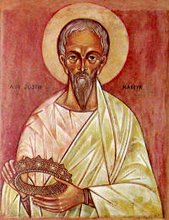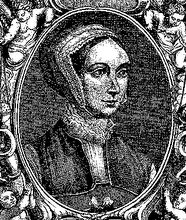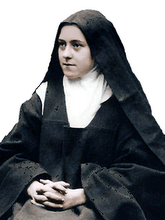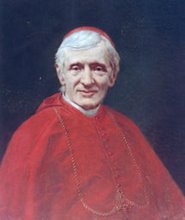 A very happy Christmas to all my readers. You can tell that the approaching feast is an important one, in fact, it is unique in its composition. The last eight days of Advent are given over to its preparation. The feast itself then lasts twelve days and these twelve days are punctuated by a small host of lesser feasts: that of St Stephen, St John, The Innocents, St Thomas Becket and then the great feast of Our Lady - all of these in their own way giving colour to the Feast of the Nativity of the Lord. So, take each of the twelve days in their turn. I would recommend starting the celebration of Christmas, on its first day, quite gently and working up to the great climax of the feast on the last day, the feast of the Epiphany. I think that we need to do it this way because there is so much grace to enter into at Christmas; it is such a tremendous twelve days of thanksgiving to God.
A very happy Christmas to all my readers. You can tell that the approaching feast is an important one, in fact, it is unique in its composition. The last eight days of Advent are given over to its preparation. The feast itself then lasts twelve days and these twelve days are punctuated by a small host of lesser feasts: that of St Stephen, St John, The Innocents, St Thomas Becket and then the great feast of Our Lady - all of these in their own way giving colour to the Feast of the Nativity of the Lord. So, take each of the twelve days in their turn. I would recommend starting the celebration of Christmas, on its first day, quite gently and working up to the great climax of the feast on the last day, the feast of the Epiphany. I think that we need to do it this way because there is so much grace to enter into at Christmas; it is such a tremendous twelve days of thanksgiving to God.Monday 24 December 2012
A grace-filled feast
 A very happy Christmas to all my readers. You can tell that the approaching feast is an important one, in fact, it is unique in its composition. The last eight days of Advent are given over to its preparation. The feast itself then lasts twelve days and these twelve days are punctuated by a small host of lesser feasts: that of St Stephen, St John, The Innocents, St Thomas Becket and then the great feast of Our Lady - all of these in their own way giving colour to the Feast of the Nativity of the Lord. So, take each of the twelve days in their turn. I would recommend starting the celebration of Christmas, on its first day, quite gently and working up to the great climax of the feast on the last day, the feast of the Epiphany. I think that we need to do it this way because there is so much grace to enter into at Christmas; it is such a tremendous twelve days of thanksgiving to God.
A very happy Christmas to all my readers. You can tell that the approaching feast is an important one, in fact, it is unique in its composition. The last eight days of Advent are given over to its preparation. The feast itself then lasts twelve days and these twelve days are punctuated by a small host of lesser feasts: that of St Stephen, St John, The Innocents, St Thomas Becket and then the great feast of Our Lady - all of these in their own way giving colour to the Feast of the Nativity of the Lord. So, take each of the twelve days in their turn. I would recommend starting the celebration of Christmas, on its first day, quite gently and working up to the great climax of the feast on the last day, the feast of the Epiphany. I think that we need to do it this way because there is so much grace to enter into at Christmas; it is such a tremendous twelve days of thanksgiving to God.Saturday 22 December 2012
A sign from Sydney
Sydney has just hosted its fifth annual iWitness Conference for young people - a tremendous sign from the Church downunder.
The iWitness Conference was pioneered by young Catholics from Sydney is response to WYD08. For five years now it has brought together some hundreds of young Catholics for a four-day event. The organisers draw on some of Australia's best speakers, bishops, priests and laypeople.
The focus of the event is to deepen the relationship of young people with Christ, and this year the conferemce did this by opening up the Sacramental life of the Church. With Morning Office, Holy Mass and Eucharistic Adoration taking place each day, the opening talk was titled "The Sacraments: a grace-filled life". Following this each of the seven sacraments was presented in turn, some by a number of speakers. This input was then followed with separate input for both young men and young women, with talks on "The masculine spirit" and "The feminine genius". The final talk was titled, "Christian marriage confronts a secular society".
The days were punctuated with down-time and periods of recreation. I took part in the iWitness Conference twice and was extremely impressed by what I experienced; I wish I had been there earlier this month for this year's Conference. I took the above photo a few years ago at the event; in this picture a group is polishing up the brasswear before Mass. May the Church in Sydney grow in grace!
Friday 21 December 2012
Another loss
 Yesterday, Thursday, Fr Denis Herlihy of Shrewsbury Diocese, died at home in Cork, Ireland. Fr Denis was another great friend to Youth 2000 and supported its mission and its young people from the mid-90s till his retirement in 2009. To me he was a very dear brother priest, friend and counsellor. I will miss him. I am sorry that I never saw him again once I had left England for Australia in July 2008. I took this photo in May 2008 in Leeds. (Apologies for the poor quality of the image.) You can find more details at: www.rip.ie/death_notices_detail.asp?NoticeID=181721 May he be enjoying now the rewards of his labours, for he was always about his Master's affairs.
Yesterday, Thursday, Fr Denis Herlihy of Shrewsbury Diocese, died at home in Cork, Ireland. Fr Denis was another great friend to Youth 2000 and supported its mission and its young people from the mid-90s till his retirement in 2009. To me he was a very dear brother priest, friend and counsellor. I will miss him. I am sorry that I never saw him again once I had left England for Australia in July 2008. I took this photo in May 2008 in Leeds. (Apologies for the poor quality of the image.) You can find more details at: www.rip.ie/death_notices_detail.asp?NoticeID=181721 May he be enjoying now the rewards of his labours, for he was always about his Master's affairs.Could you show me the chapel?
On his second evening at Moseley Old Hall Charles asked Fr Huddleston to show him the secret chapel in the house. The chapel, which is on the second floor of the house, was in use until 1825. The painted plaster walls and ceiling date back to the 1700s, but the crucifix could have been the very one which stood on the altar when Charles II was there.
Charles told Fr Huddleston that "if it pleased God to restore him to his KIngdom, [Fr Huddleston] would never need more privicies." And indeed, those words were fulfilled, for in 1678 Parliament named Fr Huddleston and others as being free from the anti-Catholic laws of the realm.
Fr John Huddleston, born in Farington, Lancashire in 1606, died a chapalin at Somerset House in London in 1678. It was he who Charles II called to his bedside on 5th February 1684/5 as he lay dying, and who received him into the Church.
Thursday 20 December 2012
East to the Old Hall
Eight miles east of Boscobel House is Moseley Old Hall, and just north of Wolverhampton. The Hall was built in 1600 by the Whitgreave family; Catholics and Royalists who lived at the Hall till 1925 (what a wonderful family), after which the timber-framed house was encased in brick by the new owners.
The photo above was taken inside the Hall's most famous priest hide. This hide was used by Charles II on 8th and 9th September 1651 (after the Battle of Worcester). The hide is under a closet on the first floor. It measures 5' x 4'9" x 3'6", so it is slightly larger than the hide at Boscobel.
It is interesting that the King was welcomed at the Hall by a Catholic priest, Fr Huddleston. After spending two nights in the hide the King and priest spent some of the following day sitting by the window which is directly over the front door of the house(photo below). From here they could see some of the battle-weary remnants of the Royal army making their way north.
There are two other hides in the house. Both were most likely used for storing discrete material. The photo below was taken in the attic space on the second floor. It is certainly possible that a person could have hidden in here, although the original entrance is no longer in place.
Here again is the window over the entrance porch from which the King and the priest, looking out for pursuivants, saw soldiers of the Royal army, many of them wounded, making their way north and out of reach of the Parlimentarian army. The Hall is now owned by the National Trust and, although the brick exterior of the house is rather prosaic, the interior is wonderfully atmospheric.
Wednesday 19 December 2012
A house in Staffordshire
In the early part of the seventeenth century Boscobel House was a Jesuit safe-house in Staffordshire. It was originally a farm house on the Giffard Estate of Chillington. In 1632 it was remodelled as a hunting lodge and subsequently underwent substancial changes. Priest hides were certainly incorporated into the building in the early 1600s and two of these remain to this day.
The photo above shows the entrance to the hide under the closet on the first floor. Its location is seen on the photo below; between the small door at ground level and the tiny square window in the chimney stack. The hide would be easily found today and so it is probably the remnants of a former hiding place which was more cleverly contrived, or it is the remnant of a discrete way out from the first floor to the back garden.
The famous hide of Boscobel is the one under the second floor bedroom (photo below). This was the hide used by King Charles II on the night of 6th/7th September 1651. The hide is 4 x 3'9" x 5'3" - somewhat uncomfortable for a tall man, which Charles was. Yet the hide is well-concealed for there is a false wall in the room below. The hide was entered through a trap door in the top steps as one ascends into the room. At the far end of this room was the secret chapel; a bed is presently situated in that part of the space where the altar would have been.
When I first visited Boscobel House about twenty years ago the entrance to the hide was left closed and a guide told us that there was a priest hole in the room and asked us to search for it. We searched, tapped panels and poked boards, but after an extensive investigation of the room and stairwell we gave up the search. When the guide then raised the trap-door, which comprised the upper two steps, to reveal the way into the hide, we are absolutely amazed. When I was there this Autumn, the steps were fixed in place and a glass panel had been placed in the floor of the room to allow you to peer down into the hide; a much less exciting experience than being able to make your own search.
Nonetheless, Boscobel House is a must for priest-hole enthusiasts and those interested in promoting recusant history. Check the opening times beforehand.
Friday 14 December 2012
A much respected priest
Remembering Fr John Edwards SJ, who died earlier this week, 12th December 2012. May he rest in peace and rise in glory.
I have many very fond memories of him, but especially I remember the retreat he gave to us when I was at seminary in Valladolid, probably in 1984. In fact, of the six annual retreats which I received, the one which he gave us is the only one that I now remember.
Fr John was very committed to supporting Youth 2000 during the previous decade and I remember particularly that he came to the Youth 2000 New Year retreat in 2000/01, which took place in Harrogate while I was parish priest there. It snowed heavily but his talks at that retreat on the Mass were superb and, again, I remember them still, as I am sure will the young people who were there.
We will miss him very much.
Wednesday 12 December 2012
Accountability
In Aragorn's speech before the Gates of Mordor in the film "The Lord of the Rings" he famously declares "A day may come when the courage of men fails, when we forsake our friends and break all bonds of fellowship, but it is not this day!"
David Cameron, in proposing Same-sex marriage, ushers in the very day that men fail.
Up to this point men have always been accountable. They have had to be - it is part of masculine identity. Men have had to be accountable to God; this accountability has been exercised in morality. But now such men eradicate God from their sight and they eradicate morality. Nor are such men accountable before the law, for they change the law rather than be accountable. Nor are they accountable before society because they have broken the bonds of society. And men have been accountable to their wives, but now this form of accountability is made little of, for now such men will not be accountable even before human nature.
Where is such a society can we look for real men? Certainly not in the person of David Cameron, who is no longer a credible leader.
I am less concerned about Christian men, for the man of the Church, in endeavouring to embrace all the human accountabilities which fall upon men, is also called to an explicit and systematic accountability in the Sacrament of Absolution. Not only that, but the Christian man's accountability reaches a new and radical form in the Holy Eucharist. Here, weekly, even daily, a man is called to lay down his whimsical self in order to embrace his true personality, who is Christ. In the Mass, Aragorn's speech surprisingly becomes reality.
Today is a day to seek the intercession of St Edward the Confessor, Patron of England, for he, a man and a ruler, sought to embrace the full reality of both for the good of others. We should seek also the intercession of our Martyrs who gave their lives for the full truth of human personality, masculine and feminine, a fullness which is uniquely found in Christ. They are real leaders because they are servants of truth.
Monday 10 December 2012
The new dark age
The English Parliament will, this week, debate Same-sex marriage; an obvious step for a secular State which does not espouse Christianity and sees no value in its foundations.
Christianity is based upon the self-revelation of God who wishes to share Himself with human beings. In this light, human beings discover that they are the image of God, and that as a consequence they are called to love one another.
At the foundation of human life and culture, in the Christian vision, is the mystery of man and woman, who meet each other to form a friendship, and from that friendship comes new life.
Secularism is a completely distinct vision of life and it seeks its own foundation for its society. What is unfortunate about the foundations of secular society is that there is no agreement about what is human. The foundations of secular society are wealth, beauty, success. But devoid of the all important ingredient - how we are to understand our humanity - secular society will inevitably lose its culture; the communication between individuals, groups and communities will scarcely be possible at all.
The Uk will become increasingly a very unpleasant place to live.
It is surprising how quickly this state of affairs has come upon us. However, once the Second World War was over, Europeans began shedding their Christian inheritance and looked instead to the secular vision. The saddest thing of all is that in our era men have let go of their responsibility for the Gospel.
Nevertheless, the sharp contrast that will increasingly be seen between culture, which is Christian, and the anti-culture of the new dark age, will give vision and strength to the new evangelisation.
Sunday 9 December 2012
1966 and all that
The other day I came across an excellent article on-line about how problems arose at the time of the inauguration of the New Catechetics and the influence which Corpus Christi Catechetical College had.
This is the link to the article: http://www.churchinhistory.org/s3-gospels/(g311)-new-catechetics.htm (The first part narrates what took place in England, the second part speaks about what happened in the USA.)
I don't know who wrote the article but the author is to be commended on presenting this matter with such clarity.
The article is very helpful in enabling the reader to understand some of the circumstances which led to the collapse of the teaching of the faith in Catholic Schools in the latter part of the previous century. The author throws light on these points:
1. The social and cultural changes which affected the teaching of the Faith, and the reason why there was a need to adapt our methods.
2. The goodness of the first new resources to be presented by priests such as Canons Ripley and Drinkwater.
3. The responsibility of Cardinal Heenan for not appointing them to lead the newly founded Corpus Christi College, and his responsibility for appointing Richards and de Rosa to lead it. (Why were such wacky priests holding teaching posts in the Westminster seminary to begin with?)
4. The problem with Corpus Christi flowed out of erroneous opinions about the Sacred Scriptures held by the founding staff members. This is perhaps the most important point which this article makes: from an erroneous understanding of Scripture flowed an erroneous catechetics.
5. The way in which the teaching of the faith was affected nationally by these new ideas.
6. The need that existed then, and which still exists, to nurture skills-based learning, together with the need to catechise children in the content of the faith.
Corpus Christi College existed for only nine years, 1966-1975, but when it closed it closed finally, never to arise from the ashes like the phoenix. I recommend this article to you.
Friday 7 December 2012
On the wagon
Right next to St Giles church on St Giles High Street, London is the pub called "The Angel". The present building dates from the late 1800s but there was an "Angel" pub on this site going back at least to Tudor times. This pub and the church next door, in those days, marked the western edge of the city where St Giles High Street led out onto Oxford Street. It was along this route that condemned felons were led out from Newgate Prison to Tyburn to be hanged.
Towards the end of the 1600s a custom began in which the execution party would stop at the pub and the condemned man/men be offered a last drink, "one for the road".
Not only that but the man who was driving the cart which held the condemned could not partake in this drinking session; he had to keep his wits about him because he was "on the wagon".
This custom post-dates the era of the martyrs and would have come to an end when Tyburn ceased to be the place of public executions towards the end of the 1700s. But the expressions have taken root.
Wednesday 5 December 2012
A field for the Beatified
In the centre of the West End, London, just off Charing Cross Road, is the old church of St Giles in the Fields. In was in a plot near the north wall of the church (photo above) that the quartered remains of eleven martyrs were buried, along with the un-quartered remains of another. They were all wrongly condemned, and executed at Tyburn. The quartered remains of St Oliver Plunkett, the last victim of the Titus Oates Plot, were also buried here. His remains were later taken up and enshrined, some in Ireland, some in Downside Abbey church, England.
The mortal remains of the others, who were all beatified by Pope Pius XI in 1929, lie in a now unmarked spot in this graveyard. At least the church's sign board, facing St Giles High Street, acknowledges their presence. These Blesseds are:
Fr Thomas Whitbread SJ, 1618 - 30th June 1678.
Fr William Harcourt SJ, 1609 - 30th June 1679.
Fr John Fenwick SJ, 1628 - 30th June 1679.
Fr John Gavan SJ, 1640 - 30th June 1679.
Fr Anthony Turner SJ, 1628 - 30th June 1679.
Edward Colman, layman, 1636 - 3rd December 1678.
Richard Langhorn, 1624 - 14th July 1679.
Fr William Ireland SJ, 1636 - 24th January 1679.
John Grove, layman, -- - 24th January 1679.
Thomas Pickering, Benedictine lay brother, 1621 - 9th May 1679.
Together with them lie the remains of one of their companions who died in custody before he could be executed: Venerable Edward Mico SJ, 1630 - 24th November 1678.
If you are in London near this place, remember their witness. In due course, a fitting public memorial would be appropriate there.
Tuesday 4 December 2012
Menthorpe-by-water
Recently I drove across the Vale of York in order to see the tiny village of Menthorpe; what once was a village is now a couple of farms. When I got near I discovered that some of the roads were still closed due to the extensive flooding which took place last week in England. Menthorpe had become Menthorpe-by-water. I took the photo above from Menthorpe looking due east across the swollen River Derwent. The photo below I took about a mile south of Menthorpe where a another swollen beck crossed the road, making it impassable. The winter sunlight on all this silent water was very lovely.
Menthorpe is the village which my ancestors, the Freemans were from, the village where Blessed William Freeman was born.
Monday 3 December 2012
Gallows Hill, Warwick
A claim which my own family forebears have made for a number of generations is that Blessed William Freeman, from Menthorpe, Yorkshire, is our ancestor. I have spoken about him before on this blog; he was hung, drawn and quartered at Warwick, 13th August 1595, for his priesthood. He was beatified by Pope Pius XI in 1929.
Two others were to suffer here on 16th July 1604; Fr John Sugar from near Wolverhampton, hung, drawn and quartered, and Robert Grissold, layman from Rowington, Warwickshire, hung. Both were beatified by Pope John Paul II in 1987.
Recently I went to find the site of the gallows and was unexpectedly helped in this endeavour by a man who lives in the area. The site of the gallows, which is presently unmarked in any way, is at Grid reference: SP298637. This ancient gallows site is south of Warwick town on the old Banbury Road, a stretch of which is still called "Gallows Hill". I took both the above photos of the site, looking north-west, towards Warwick, whose castle you can just make out in the distance. Follow Gallows Hill Road south-east, the site is on the right hand side of the road more of less on the very crest of the hill, and right opposite the drive of Heathcote Hill Farm.
There used to be processions from Warwick to this site up until the 1950s, or even into the 1960s. It would certainly be fitting for some memorial plaque to stand near the place.
These men received the wounds of England's rebellion into their flesh, so that Christ's love would still be present in this land, and so that the Faith would have a home here. What tremendous forebears we have.
Blessed William Freeman,
Blessed John Sugar,
Blessed Robert Grissold, thank you for the light of your witness and your prayers before the Throne of Grace.
Saturday 1 December 2012
Walking into a mirror
The mass media is like a mirror in which we see ouselves; it reflects to us what we are doing and what we are like. Recent issues concerning the media - the way in which the BBC has concealed in-house scandals and the state of affairs now surrounding the Press tell us that we can no longer see ourselves coherently in our media - the relationship is fractured.
The present loss of confidence in the media is really a sign of where society has got to today. We no longer know who we are. We have become so souless that neither government, nor law, nor media, is able to coherently speak for us.
Some in society want the regulation of the Press to be underpinned by law, while some in Government declare the absolute rights of free speech. Does free speech come before truth? Surely truth is the mainstay. Am I wrong?
The question about the already existing Code of Practice of the Press is very important. Should the Press observe its own Code of Practice or not? Of course it should. How else could it begin the regulate itself. However, a much more important question to ask is: upon what basis should the Code of Practice be established?
This latter question is implicit, but still unvoiced, in the current debate about this issue, for the public debate is rounding upon whether or not there should be Statutory Undepinning of the Code of Practice. If there is to be such underpinning, what concrete criteria would be used to establish it?
Here lies the problem, for there is today no agreement in society about who we are, where we should be going, or what we are meant to be doing? Our society has gone beyond itself, morally and spiritually, and the row about the media is symptomatic of this drift.
Who is there who is now in a position to help? So many dimensions of our society are either discredited, or in some way have lost that full sense of credibility which used to be afforded them. These dimensions of our society include the Church, Parliament, the Finance sector, the Media. Who then will help our souless society to underpin itself again and enable real communication between people to take place again?
I go back to an address given by Angel Suquia on 18th May 1992, the then Cardinal Archbishop of Madrid, to the Spanish Bishops. He said (this is not a quote but rather my preces of some of his address, which was given in Spanish):
Today's fundamental task could be defined as the rehabilitation of what is human. In Western Society, all the basic human points of reference, the foundation of human values and behaviour, have collapsed. There is scarcely any interest in building one's own life; fulfilment is entrusted to luck and to the entertainment industry. When we try to understand ourselves within the closed secular horizon we do not even find the foundation for our democracies. The great task then, is the reconstruction of what is human, beginning with the human being and extending to all the institutions of social life. But how will this task begin without fundamental questions being raised in the public forum? The New Evangelisation then, is the Catholic response to the present condition of our society.
The Prime Minister is set against the establishment of Statutory Underpinning of the media perhaps because, as a secularist, the question of fundamental questions being raised in the public forum is a taboo. I would say that the present clash between society and its media is a good thing precisely because it points towards fundamental questions being raised. In fact, we need a totally renewed society; a renewed media will follow.
Friday 30 November 2012
Devised by Burghley
One person stands at the centre of all the conspiracies that sought to thwart, depose or kill Mary, Queen of Scots, from the time that she was betrothed to the Dauphin in France; he is William Cecil, the first minister of Elizabeth Tudor, 1520 - 1598.
During its history England has produced some fairly nasty people, but the person of William Cecil is particularly hard to swallow as one of our forebears. It was he who from the outset conived and conspired to force the downfall of the Scottish Queen and whose 'skill' at manouvering the English State to execute her, caused shock and scandal throughout Europe and precipitated the whole episode of the Spanish Armada. Many, throughout Europe, still placed their hopes in Elizabeth Tudor, that she would ultimately show herself to be an honourable and Christian ruler, but the execution of Mary Stuart destoyed those hopes.
William Cecil masterminded the reconstruction of the English State, together with a whole mindset, as an alternative to truth. He manipulated truth and freedom in such a way that his alternative approach to reality controlled government, public information and individual conscience. The penalty for standing against him was death, imprisonment and loss of all possessions and rights, for men, women and even for young children. It is hard not to think of Hitler and Stalin when you think of Cecil!
Cecil was the architect of a State that was, in its day, an early and extremely agressive form of the Enlightenment, pushing God and truth to the margins and establishing human endeavour as the pivot. It is not surpising that England, with him at the helm manipulating God's plan and laws according to his design, became separated from the great movement of the Church in the world. In such a context, many, including Mary Stuart were merely pawns.
However, since her death Mary Stuart has been shown much honour by each successive generation; it is as though we instinctively recognise her dignity as well her naivity. And much more, we honour and celebrate all those beatified and canonised martyrs, who are such a witness for us today and who help us to see the real vision of life and the call to be part in it: God's Kingdom.
Thursday 29 November 2012
Final journey
On 21st September 1586 Mary, Queen of Scots was taken from Chartley Manor to Fotheringhay Castle near Peterborough, a site chosen by the Privy Council for its strength as a fortress, its remoteness in middle-England, and its relative closeness to London. At that time Fothering Castle was owned by Elizabeth Tudor.
The journey took four days. The party stopped first at the old Abbot's House just outside Abbot's Bromley at Hall Hill. Presently, Manor House Farm stands on the site of this former monastic residence. Then moving east, the party stopped at the Earl of Huntingdon's House in Leicester. The last part of this fortified manor was demolished in 1902. Finally, the party arrived at Fotheringhay Castle on 25th September 1586. The Queen was installed in the first floor apartments of the State Appartments of the Castle, overlooking its Great Hall.
The trial took place on 15th October 1586. (St Teresa of Avila, whose feast day it would become, had been dead for just over four years.)
On 25th October 1586 a verdict of Guilty was delivered in London. (The day which would become the feast of the Forty Martyrs.)
On 1st February 1587 Elizabeth Tudor signed the Death Warrant for Mary Stuart.
On 7th February Mary Stuart was informd that she was to die the next day.
On 8th February 1587 Mary Stuart, Queen of Scotland and Dowager Queen of France, was judicially murdered, publicly executed, in the Great Hall of the Castle, sometime shortly after 8am. (This day is now the feast of St Josephine Bakhita and my birthday.)
Fortheringhay Castle fell into disuse immediately after the execution and was finally demolished in the 1630s. The site (photo above) is a now a scheduled monument and is open to the public. It was not a large Castle and nothing of its fabric and moats now remain (except a small piece of the curtain wall which was left in place and surmounted by memorial plaques to Mary, and to Richard III who was born there).
Wednesday 28 November 2012
The trap is sprung
When, in the summer of 1586, members of the Privy Council knew that they had lured the Scottish Queen into their conspiracy, they sprung the trap. Mary was unceremoniously bundled out of Chartley Manor temporarily so that her rooms, possessions and papers could be searched.
From 11th - 25th August 1586 she stayed at Tixall Hall. Tixall is about ten miles west of Chartley, just east of Stafford. Edward Aston, a committed Protestant, had built Tixall Hall in 1555. In the 1700s the Hall was demolished with the intention of rebuilding it. When this was eventually done in the late 1700s the new build was itself demolished in 1928. The original Gatehouse - which still remains - was built in 1580 by another member of the Aston family. The drawing above shows Tixall Hall and the Gatehouse as it was in the mid 1600s. The house is as it was when Mary lodged there; the Gatehouse did not exist in Mary's era.
On 25th August 1586 Mary was moved back to Chartley Manor.
Tuesday 27 November 2012
The clouds gather
On Christmas Eve 1585 Mary, Queen of Scots was installed in Chartley Manor. She would remain here, undisturbed, until the summer of 1586.
Chartley Manor was the home of the Ferrers family who had been the local Barons since the early Middle Ages. Their castle on the hill, overlooking the village of Stowe-by-Chartley, had been abandoned in the late 1400s when the family built a moated manor house close by.
The first image above shows Chartley Manor as it would have been when Mary Stuart was lodged there. The second picture is of the remnants of the castle today seen from the road. The Manor stood to the left of this photograph on ground below the castle. The Manor was destroyed by fire in 1781 and nothing at all, except evidence of the former moat, remains. A new Manor was built on a new site nearby; this in turn was destroyed by fire and the Manor that now stands there was built in the late 1800s.
The image of Chartley Manor as was, shows that it would have been a much more cosy and hospitable house than Tutbury Castle could ever have been. Indeed, it looks like a little gem, and it is a great shame that nothing of it now remains. It was while Mary was at Chartley that members of the English Priviy Council brought their plotting against her to a head. The plot which they devised would incorporate Anthony Babington and ensure his death, and also bring to a conclusion their plan for Mary Stuart.
Monday 26 November 2012
To Tutbury again
On 13th January 1585 Mary Stuart was moved from Wingfield to Tutbury in Staffordshire, her fourth and final period of confinement there. The party stopped overnight between Wingfield and Tutbury in Derby, but I have been unable to identify the house in which the Queen was lodged for the night.
The drawing above was made before Tutbury Castle was mostly demolished after the Civil War. Sir Ralph Sadler had instructions to keep her confined within the castle but within a few months had relaxed and the Queen was riding and hawking outside the castle again. So, in April 1585 Sir Ralph was relieved of his duties and Sir Amyas Paulet took over the custody of Mary Stuart. She was now confined strictly within this unpleasant and smelly castle.
Mary's health detriorated throughout the Autumn of 1585 and the decision was finally made in late December for her to move to a better place of lodging. So, on Christmas Eve the Queen, her small retinue and her guards left Tutbury Castle and rode west towards a more salubrious house.
Eleven more years
After her two and a half year stay at Sheffield Castle, Mary Stuart was, for the next eleven years, moved around some of the other houses of the Earl of Shrewsbury. First to Sheffield Manor, then to Buxton, where she stayed in Buxton Old Hall on three occasions. This house no longer stands but the site is occupied today by the "Old Hall Hotel". She would also return to Sheffield Castle, and on four occasions to Chatsworth Hall. Mary was at Sheffield Castle when the Battle of Lepanto took place, 7th October 1571. She would have been at Chatsworth when St Edmund Campion and his companions were executed, 1st December 1581.
She also stayed once at Worksop Manor, pictured above as it would have been a century later. George Talbot had built this house but it was burnt down in 1761.
In the summer of 1584 she was moved back to Sheffield Castle for the last time. It was at this time that the Priviy Council decided to change her custodian from the hospitable Geroge Talbot to the more strict governance of Ralph Sadler, someone who was more sychophantic of the Elizabethan regime.
On 2nd September 1584 Mary was taken to Wingfield for the last time, her new custodian having received instructions to hold her more securely again in Tutbury Castle.
Sunday 25 November 2012
Another of the Earl's castles
Mary was at Tutbury in February 1570 when the Holy Father, Pope St Pius V, excomunicated Elizabeth Tudor with his Bull Regnans in Excelsis. In May 1570 Mary was ill again and was moved out of draughty Tutbury and into the more comfortable Chatsworth. She was here in July of that year when the same Holy Father signed another Bull, Quo Primum, which canonised that form of the Roman Liturgy which we know as the Tridentine Liturgy. And in November 1570 she was moved to Sheffield Castle; this was to be her home for over two years. (Above is an artist's impression of what this formidable castle would have looked like in the Middle Ages.)
The Earl of Shrewsbury also had a hunting lodge about two miles south east of the castle; the ruins of this Manor are still evident in the housing estate in Sheffield which bears its name (The Manor). Mary was allowed to hunt and lodge in this house from time to time. The castle itself was utterly demolished after the Civil War and the site, once a garden, has been built on. You can find the site at Grid reference SE358877.
If England still had all of its castles and monasteries, which were so numerous, its landscape would be today like a Fairytale landscape; richly adorned with turrets, spires, fantastic stone tracery and stained glass windows. Such a landscape would have been today a wonder of the world! Sadly two men, Henry VIII and Oliver Cromwell, destroyed this unique and beautiful national heritage.
If England still had all of its castles and monasteries, which were so numerous, its landscape would be today like a Fairytale landscape; richly adorned with turrets, spires, fantastic stone tracery and stained glass windows. Such a landscape would have been today a wonder of the world! Sadly two men, Henry VIII and Oliver Cromwell, destroyed this unique and beautiful national heritage.
Saturday 24 November 2012
Sudden move south
When some of the northern Earls, led by Blessed Thomas Percy, established the celebration of Mass again in Durham Cathedral in the Autumn of 1569, Elizabeth Tudor and her Privy Council were thrown into paroxysms of neurosis. Mary Stuart had to be moved further south so that these northern Catholics would not include her in their enterprise - The Northern Rising.
In November 1569 Mary was moved to Coventry Castle in Warwickshire. Her party stopped overnight in the castle at Ashby-de-la-Zouch, and then passed south to Coventry. Coventry Castle started as a Norman Motte and Bailey structure. This was demolished towards the end of the 1100s but then substantially rebuilt. Mary Stuart was lodged both in the castle itself and in a house near the castle. She would almost certainly have known the great Hall (photo above) which became the Guildhall of Coventry. Later alterations, not least by Parliament after the Civil war, and then the bombing by Hitler's Luftwaffe in 1942, have destroyed all but one small tower of the castle. It is not thought that the Scottish Queen actaully lodged in this tower, which can still be seen. Mary remained in Coventry until 2nd January 1570, when she returned to Tutbury for the third time.
Assorted estates
George Talbot, the earl of Shrewsbury and Mary Stuart's custodian, owned a number of castles and estates in Derbyshire and South Yorkshire. So, when the Queen and her retinue needed their accomodation to be cleaned, or if she was ill, the Earl had a number of places in which she could be lodged.
On 20th April 1569 Mary arrived again at Wingfield Manor from Tutbury and stayed for six months. However, in May she was ill and was brought to Chatsworth House (photo below). She stayed here from 15th May till 1st June 1569 when she returned again to Wingfield.
The Chatsworth that Mary knew is not as it is today; the earlier Elizabethan House was remodelled two centuries later by the Duke of Devonshire, although the inner court today has remnants of its earlier Elizabethan fabric. In Autumn 1569 Mary again returned to Tutbury.
Wednesday 21 November 2012
Trapped in a plot
On 3rd February 1569 Mary Stuart arrived at Tutbury Castle; this was to be her prison, during four extended visits, until Christmas 1585.
She disliked the castle because it was cold and draughty. When I was there recently, although the castle occupies a prominant site overlooking the Derbyshire and Staffordshire countryside for miles in each direction, with magnificent views, I could see that it would have been exposed to whatever the weather chose to deliver.
The castle would have been a formidable fortress in its day. However, it was remodelled by Charles I in the 1630s when huge classical windows were set into the curitain wall. As a consequence the castle suffered terrible damage in the Civil War when it was besieged by Parlimentarian armies. It suffered further demolishion when the War ended.
The site of the Queen's lodgings is marked; these were discovered when the inner bailey of the castle underwent a historical dig. These lodgings would have been a timber-framed house which was set against the inside of a part of the curtain wall.
Mary Stuart was Catholic and, having been the subject of English State plots from her earliest years, was now totally at the mercy of those plotters. Elizabeth Tudor and her agents were desperately setting up that particular form of the Enlightenment which is the Church of England, as a defensive cultural entity to protect the English State from Catholic truth. Curiously, having become a formalistic culture within the English State, we see today the same Church of England wrestling with its own self-focussed, self-embattled, agenda.
Many in England and beyond knew that Mary Stuart should be free and they placed their hope in the expectation that her confinement would only be temporary. I don't think that anyone then could see just how deeply this form of the Enlightenment was being entered into and forced upon the English, and the hopes of many were vain hopes.
Tuesday 20 November 2012
To the centre
On 26th January 1569 Mary was taken from Bolton Castle to be placed in the custody of George Talbot the Earl of Shrewsbury whose estates and houses were in the centre of the country. His principal stronghold was Tutbury Castle near Burton-upon-Trent. This castle was chosen as her next prison since, in south Derbyshire, she would be much further away from the Scottish border, further away from the northern pro-Catholic nobles, and yet still well out of the reach of a French rescue party.
After leaving Bolton Castle she was lodged overnight in Ripon, North Yorkshire, at the Thorpe Prebend House. This house was totally rebuilt in 1609 so we cannot now see the house as it was during Mary's visit.
Following this she lodged, en route, at Pontefract Castle, the principal castle of the north, which was mostly demolished by Parliament after the Civil War. She also stayed at Sheffield Castle, which was totally demolished after the Civil War. Then, moving south see lodged at Walton Hall, south of Chesterfield, on 1st February 1569. This house, which had been the home of the Foljambre family, was rebuilt at the beginning of the 1800s and again we cannot return to the house which Mary visited.
The next morning the party again moved south and stopped for the night, 2nd February 1569, at another of the Earl of Shrewsbury's houses - South Wingfield Manor.
This image made in the early 1800s gives us an idea of what Wingfield would have looked like in the sixteenth century. The Manor is now a ruin but one which these postings will return to, along with Sheffield Castle.
And so, on 3rd February 1569, Mary Stuart arrived at Tutbury Castle and was greeted by the Earl of Shrewsbury, who was to be her Warden for the next fifteen years.
Monday 19 November 2012
Her Wensleydale sojourn
After stopping at Lowther Castle and then Wharton Hall in July 1568, Mary Stuart arrived at Bolton Castle in North Yorkshire. She would stay here for six months until 26th January 1569. Bolton Castle was chosen because it was the Castle of Henry Lord Scrope, who was the senior English official in the north at that time. At that time, Bolton Castle was one of the most comfortable castles in England; it had a primitive central heating system and the Scottish Queen was shown great hospitality by Lord Scrope's wife. I understand that Mary Stuart's stay is the most important event to have taken place at the Castle.
Saturday 17 November 2012
On route to Yorkshire
On 15th July 1568 Mary Stuart was taken from Carlisle Castle; she was to be installed in Bolton Castle in North Yorkshire. It was thought that Carlisle Castle was too near the Scots' border for comfort. Bolton Castle is some distance away in Wensleydale so, the Queen of Scots was lodged briefly at Lowther Castle (photo above). Lowther Castle in east Cumbria, was the home of the Lowther family, the Earls of Lonsdale.
After a stay of perhaps one night the journey was resumed. The Queen and her party of guardians then stopped at Wharton Hall (photo below). This Hall, the home of the Wharton family, is further south near the town of Kirby Stephen. The fortifications of the Hall were developed in 1544 since the Hall had been beseiged by pilgrims in the 1536 Pilgrimage of Grace.
Again, after a short stay the party, with the captive Queen, made its way into Yorkshire.
Friday 16 November 2012
A history of imprisonment
For almost nineteen years Mary Stuart, Queen of Scotland, was imprisoned in various places in England by her cousin, Elizabeth Tudor. Indeed, Elizabeth had systematically plotted against Mary Stuart from the time that Elizabeth had become Queen of England; these plots were finally to extinguish the life of Mary Stuart in her judicial murder on 8th February 1587.
The Queen of Scotland fled her realm and arrived in England at Workington on the Lake District coast on 16th May 1568. Two days later she was taken, under the authourity of Elizabeth Tudor to Carlisle Castle (photo above) in Cumbria. Here she would remain for two months before being brought further south into England and away from the Scots border.
Tuesday 13 November 2012
Blessed Robert Sutton
I was in the town of Stafford recently and went to find the site of the ancient gallows. It was here that Fr Robert Sutton suffered in 1588.
The site (photo above) is on the Sandon Road north of the town where it crosses the Sandyford Beck (Grid ref. SJ923243). The site is now built up and there is no sign (as far as I could see) commemorating the site of the gallows.
And so, while Elizabeth Tudor and her sychophants were trying to establish the conditions by which the people of England might be saved, Fr Robert Sutton allowed Christ to demonstrate His love for England and its people, through his self-giving death. Robert Sutton was hung, drwn and quartered here on 27th July 1588. He had been held in Stafford gaol (further down the Sandon Road, opposite the contemporary gaol).
Robert Sutton was born in Burton-on-Trent and became an Anglican minister at Lutterworth. However, he became convicted of the Truth and told his parishioners from the pulpit that he had been teaching them false doctrine for five and a half years, and he asked them to embrace the Catholic Faith. He left England and went to Douai where he was eventually ordained priest in March 1578. Finally, in July 1588 he was arrested in a Catholic house in Stafford and condemned for his priesthood.
It is written of him that the night before he died his gaolers witnessed him deep in prayre and surrounded by a mysterious light. And also that when his quarters were taken down from the public view almost a year after his execution, that the finger and thumb of one hand (and which had held the sacred host) were not in any way corrupted.
Fr Robert Sutton was beatified by Pope John Paul II on 22nd November 1987. During the Beatification Mass at which eighty-five English men and women martyrs were honoured, the Pope said of those who were priests that they had "wished only to feed their people with the Bread of Life and with the
Word of the Gospel. To do so meant risking their lives. But for them this
price was small compared to the riches they could bring to their people in the
Holy Sacrifice of the Mass."
Blessed Robert Sutton, priest of God, may your light and your witness always be an inspiring grace for the people of this country; intercede for us today that the life of Christ may be focus and the whole truth of our lives.
Sunday 11 November 2012
Irnham Hall
A little further north in Lincolnshire is the village of Irnham. Irnham Hall was the home of the Thimelbys. They too were recusants and built the present Hall in 1510. The family remained at Irnham until 1854 when the Hall was sold. There were possibly a number of hides in the Hall but the north wing was gutted by fire in 1887. However, one hide still remains in the south wing, the oldest part of the house. It is probably the work of Nicholas Owen. The hide is on the first floor and was entered from the attics. It is a space 8ft by 5ft by 5ft 6in and used to have both a ventilation and a feeding hole.
The house is privately owned and, again, is set in the most lovely countryside.
Saturday 3 November 2012
Red Hall
Moving east into southern Lincolnshire in the town of Bourne is the seventeenth century house, Red Hall. The Hall now stands in an open lawn and is run by the local Council. It was closed when I was there. On the first floor there used to be a false-wall hide lit by one of the mullion windows behind. One part of this was merely a discrete place and could be entered from the room, the other part was entered from the top floor. The Hall itself is a lovely example of a small seventeeth century town house and has been restored. I gather that the false-wall of the hide no longer exists. I should like to learn more about its recusant history.
Thursday 1 November 2012
Mrs Vaux of Harrowden
Mrs Elizabeth Vaux of Harrowden is my kind of person. It was she who, towards the end of the sixteenth century, did so much to support priests. She was someone who was very given over to God, very free (which are two ways of saying exactly the same thing.)
Fr John Gerard writes about her in his autobiography and we know that she took enormous risks for God and His church. She declared to Elizabeth Tudor's Privy Council that she would rather die than see a priest undone. I know many people who are like her today. However, there are also today many who are her opposite: readers of "The Tablet", for instance, who in my experience, tend to be stoogy and self-opinionated about the Church.
Elizabeth Vaux worn born in Kent in 1564 to the Roper family. She married George Vaux (1564-1594) of Harrowden. They had six children. When George died in 1594 she devoted her energies to supporting the Church and its priests. Harrowden Hall (photo above) was a real centre of the Faith welcoming many priests, and complete with hiding places. The Harrowden Hall that we see today is the Wellingborough Golf Club House. The three story house which Elizabeth Vaux developed was rebuilt during the period 1716 - 1719. I don't know that any hides now remain.
The other Vaux house, the Manor of Irthingborough, also welcomed priests. Nothing now remains of this house. I took the photo below in Spinney Road, Irthlingborough of the site the Vaux Manor, which would have been to the right of the road as you look up it.
Towards the end of 1611 Harrowden Hall was raided by Government agents looking for priests; the search was unsuccessful. But Elizabeth Vaux was taken to London and put first in the Gatehouse Prison at Westminster, and then in the Fleet Prison. On 19th February 1612 she was tried and sentenced to life imprisonment and the loss of all her estates. She was paroled in July 1613 for reasons of health and returned to Harroden. In 1616 she left Harrowden and went to live in Boughton, just north of Northampton town. We know that she appeared again before the Privy Council in 1618. Her date of death and her place of burial are unknown. It is presumed, from corresponding historical evidence, that she died in 1625.
What a great example, what a great witness!
Wednesday 31 October 2012
A much needed separation
This year, the neo-pagan event of Hallow-een took place on Sautrday 27th October, whereas the Vigil of the Christian Feast of All Saints is this evening, 31st October. These two radically different celebrations have long since needed to be separated so that they can be distinguished for what they are: one, a night which beckons to demons and ghouls, the other, a celebration of the grace of Christ in the lives of His Saints.
I would be happy if Christmas were dissasociated from 25th December and celebrated instead on the Sunday following the Fourth Sunday of Advent.
Neo-pagan festivals are on the rise but they have nothing in common with celebration of the Mystery of Christ.
Tuesday 30 October 2012
Kirby Hall
In a remote northern corner of Northamptonshire is Kirby Hall; another magnificent example of the English Renaissance. The transformation of the earlier house began in 1575 under the Hatton family and continued throughout the seventeenth century. My interest followed that of Mrs Elizabeth Vaux, the great Catholic lady of Northamptonshire in the early recusant era. Looking for a base for the Catholic mission in that area, which would serve better than her houses in Harroden and Irthlingborough, in March 1599 she took a lease on Kirby Hall. In the summer of that year she came to visit the property with Fr John Gerard, St Nicholas Owen and Hugh Sheldon. Their intention was to fit the property out with hides and conveyences which would enable the concealment of priests and items for the celebration of Mass in the house. However, Elizabeth Tudor's Privy Council got wind of this and raided the house, preventing any further development for Catholic use to take place, and Mrs Vaux abandoned the plan. Fortunately, Mrs Vaux and her three guests curtailed their visit and had left the property before the pursuivants arrived.
The property is now in the care of English Heritage; part is in ruin and part is still an integral building, although no longer a dwelling place. The architecture is fabulous, particularly the grand Elizabethan porch (second photo above). There would have been enormous scope here for the master hide builder, Nicholas Owen, to practice his skills, but no hides were in fact built here. The house is matched by a wonderful Elizabethan garden, and the whole site is set in lovely countryside. More on Mrs Vaux later.
Saturday 27 October 2012
The Tresham trail, part 3
Probably the most famous building which Sir Thomas Tresham had built is the Triangular Lodge. This is located about half a mile to the north west of Rushton Hall on the edge of the Tresham Estate. It is now in the care of English Heritage.
The Lodge is dated 1593 and 1595, the dates of its execution, and is loaded with Christian and Trinitarian symbolism, some of it obviously a play on the Tresham family name itself.
The Triangular Lodge really is a marvellous 3D gesture against Elizabeth Tudor. Not all in the country would become sychophants of her Protestant State, and in the Latin words written on the frieze of the north face of the lodge we see just how deeply that was embraced by Thomas Tresham: "Who will separate us from the love of Christ?" (Photo below.) Sir Thomas also built the Market Hall in the town of Rothwell nearby. I visited the Hall one evening and saw it floodlit in the centre of the town, but had forgotten to bring my camera.
I should still like to discover where Sir Thomas is buried so that I can visit his memorial.
Subscribe to:
Posts (Atom)

















































